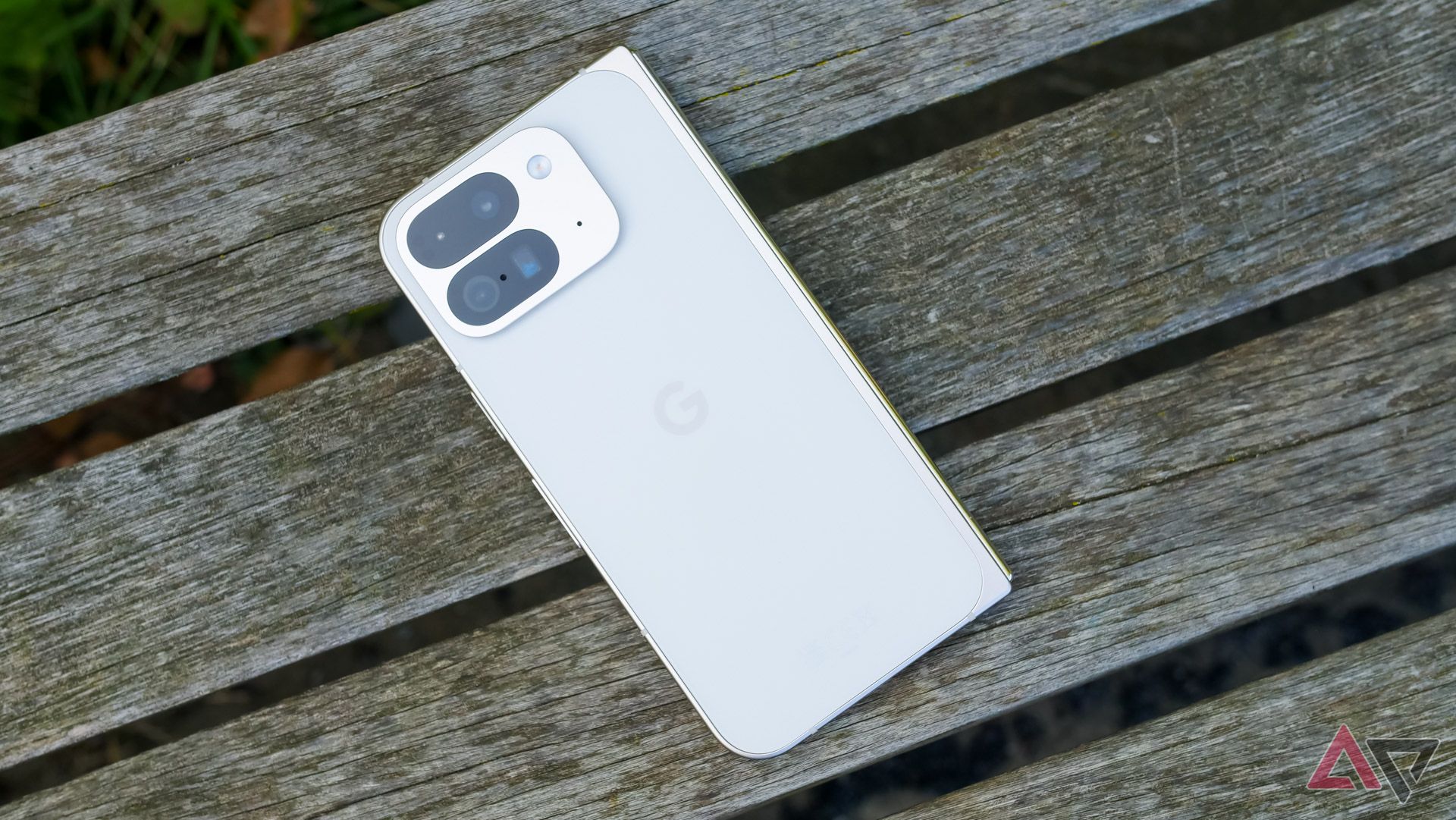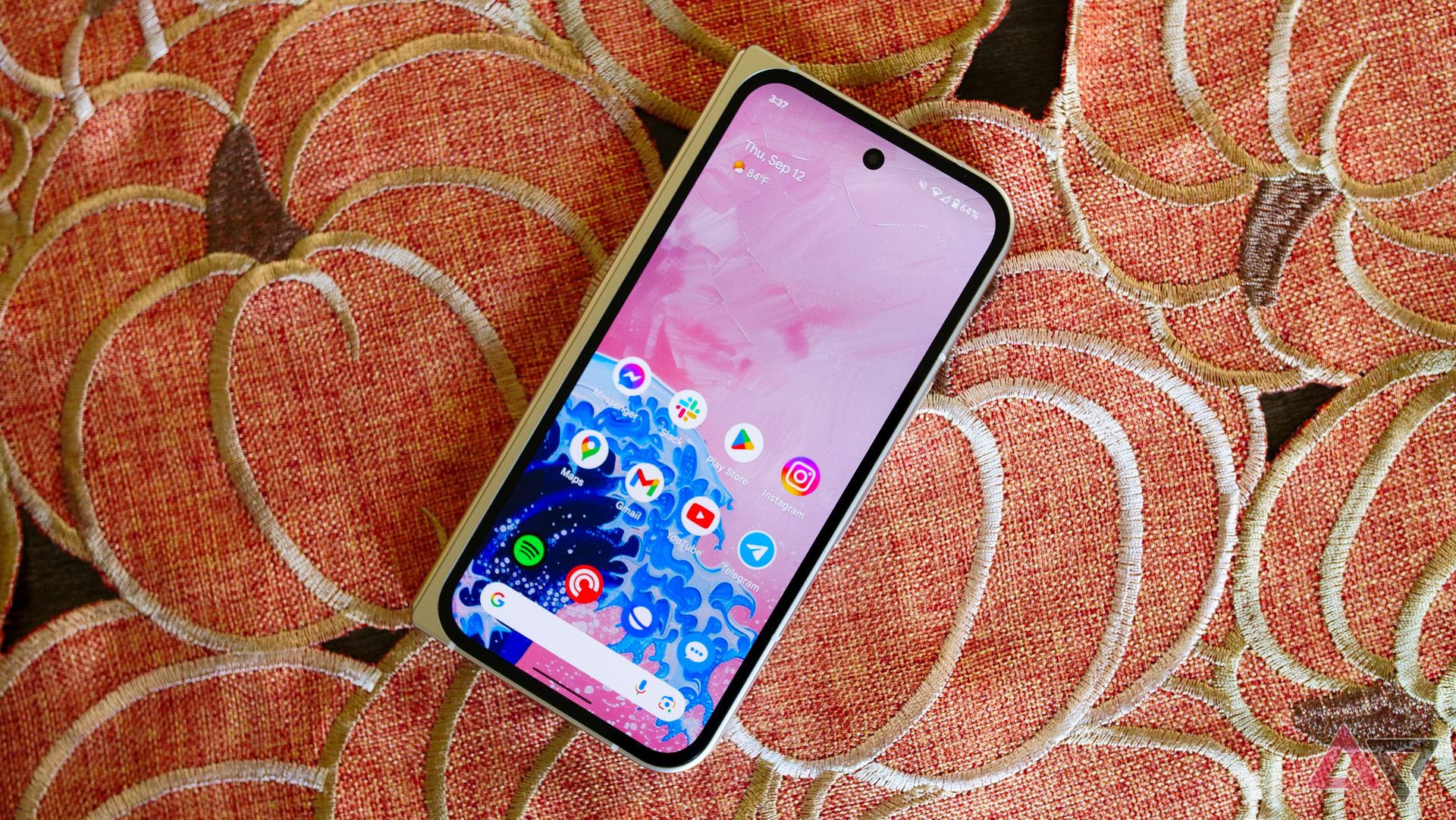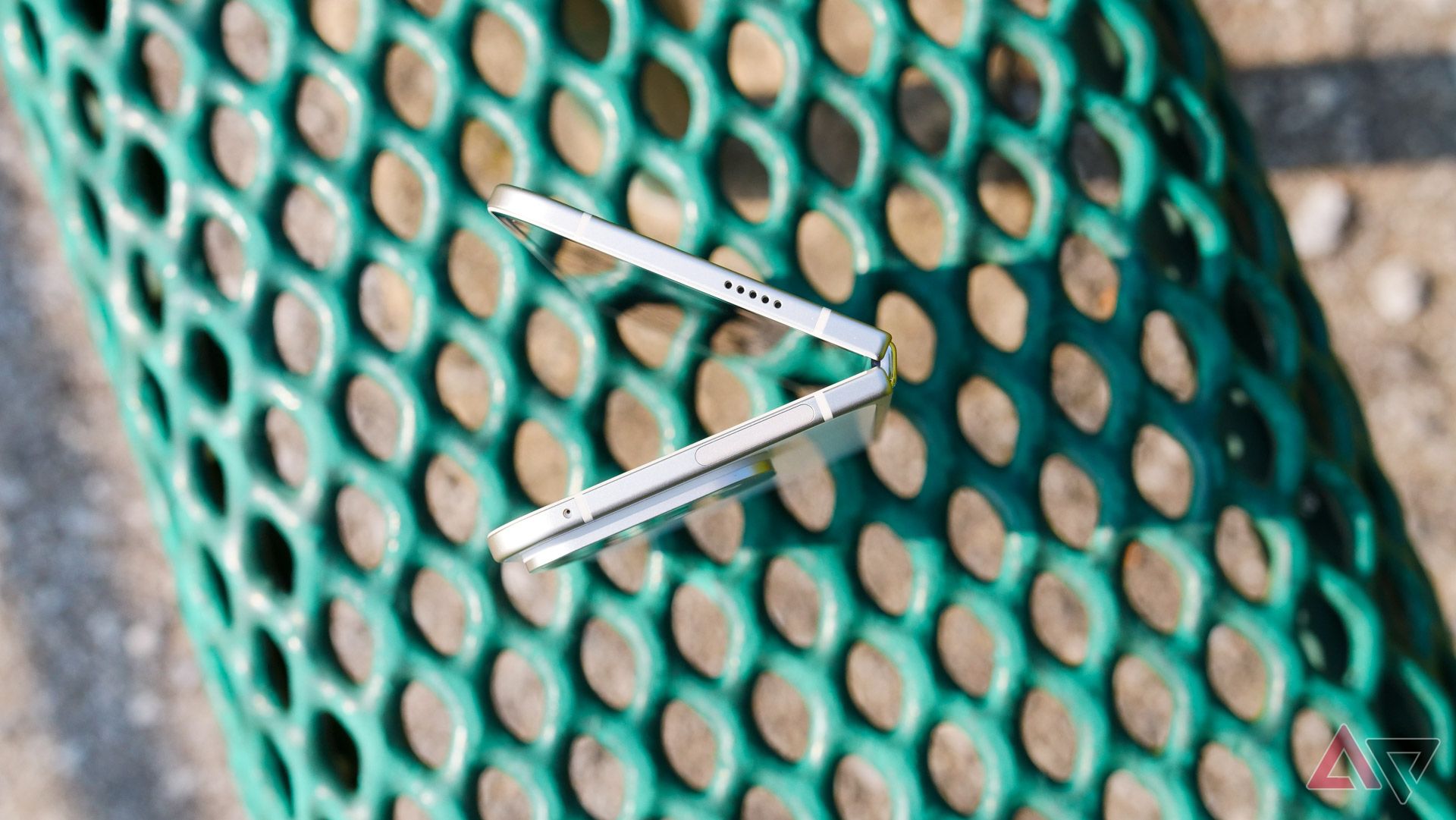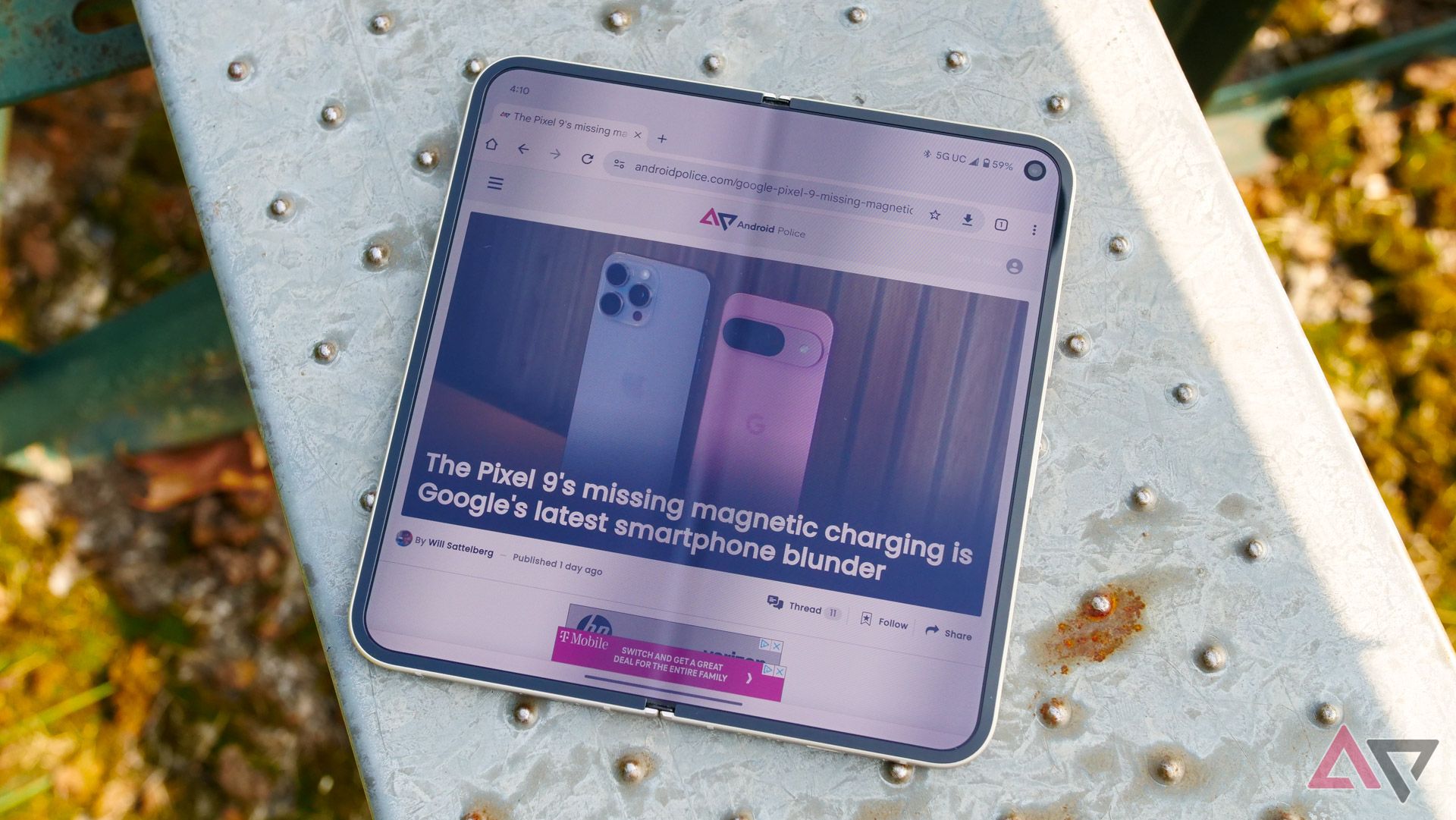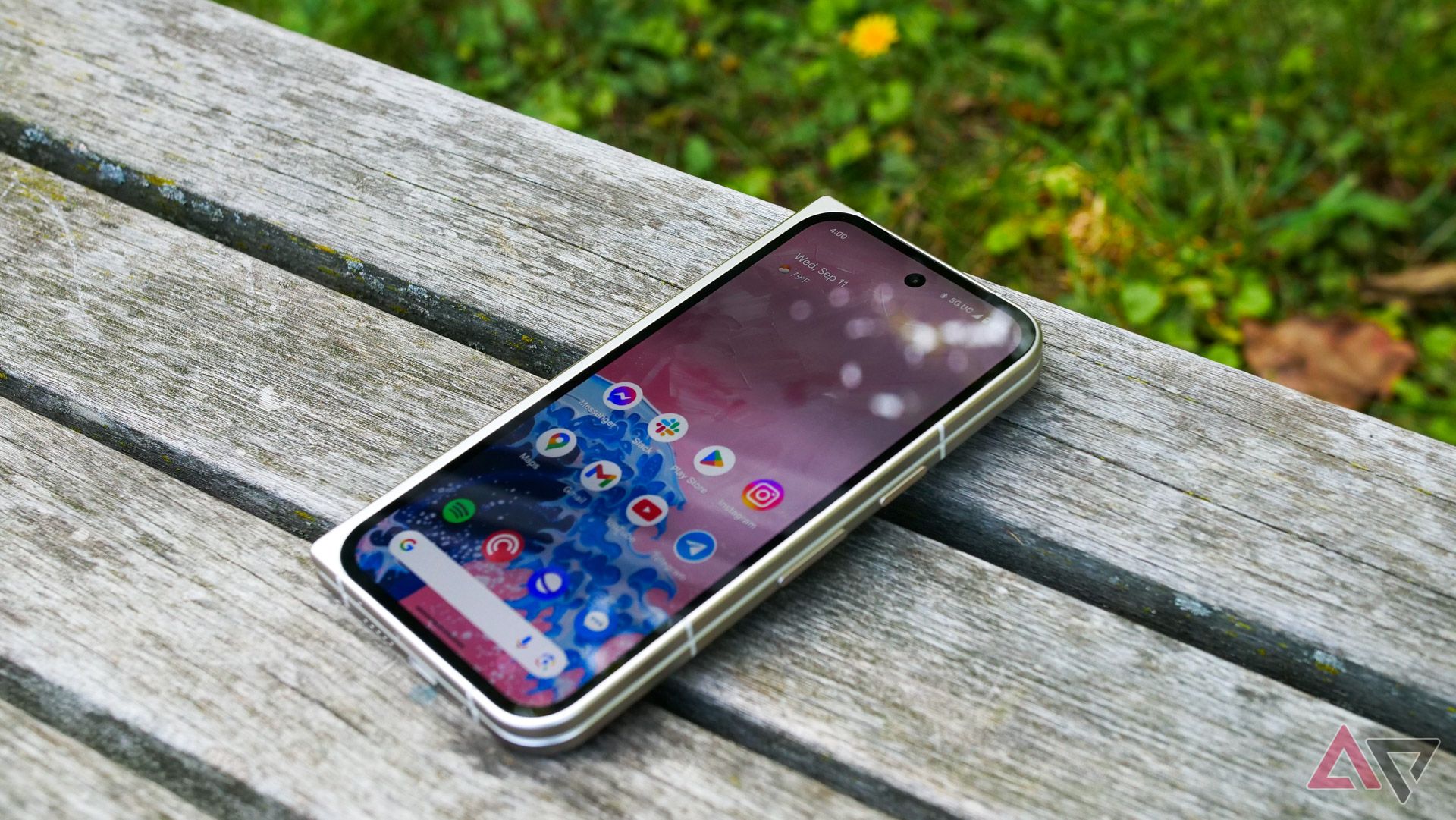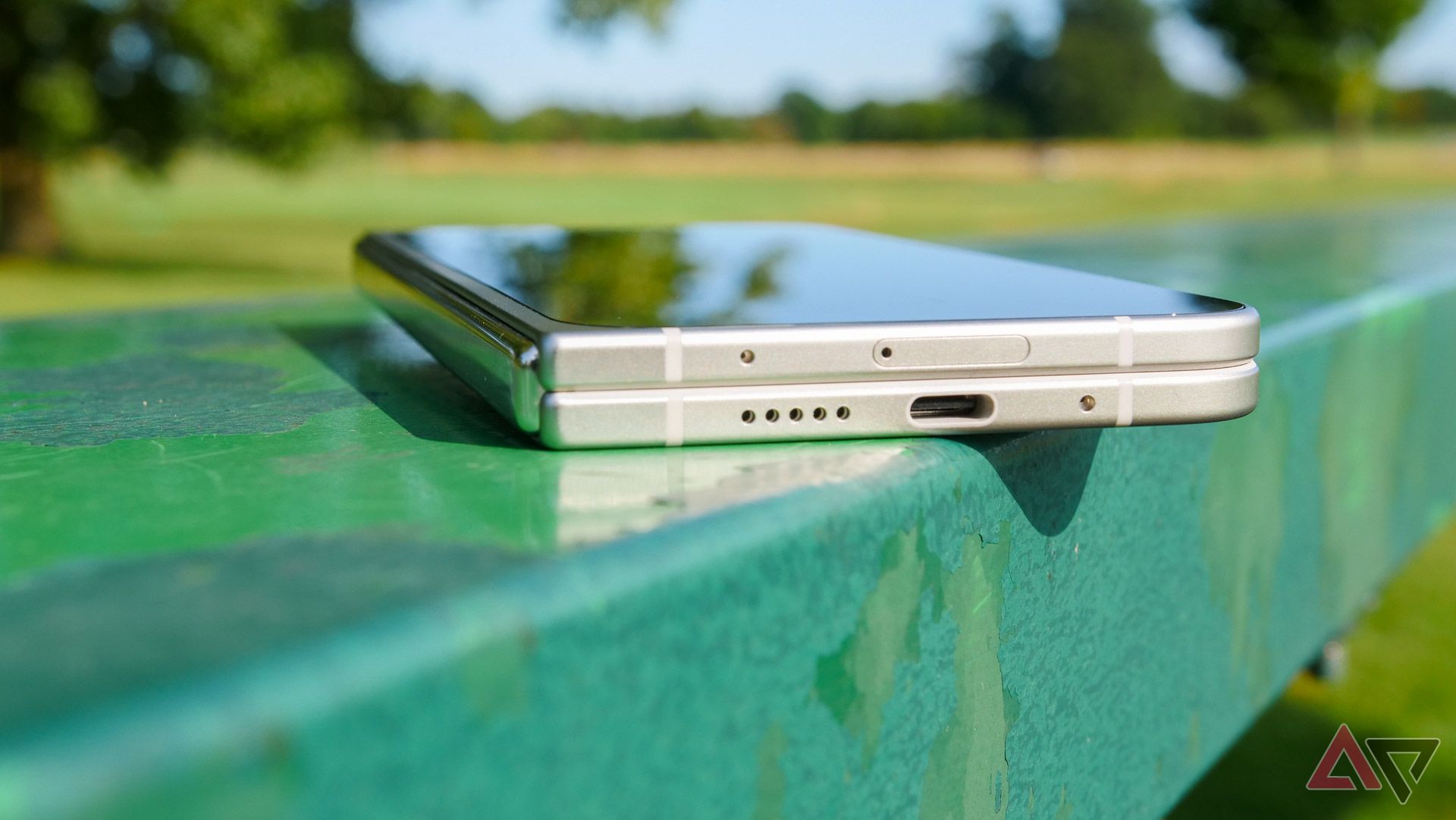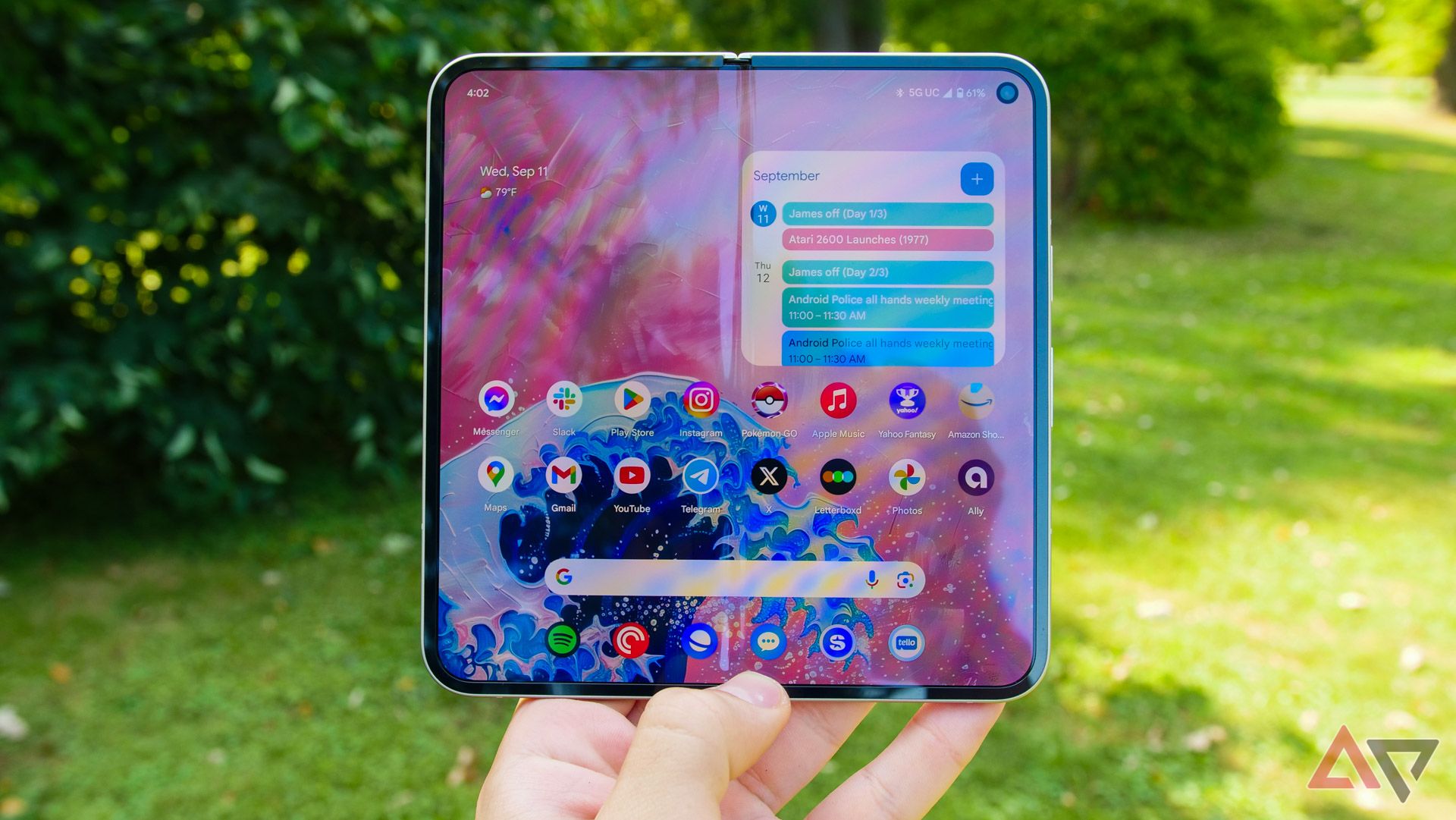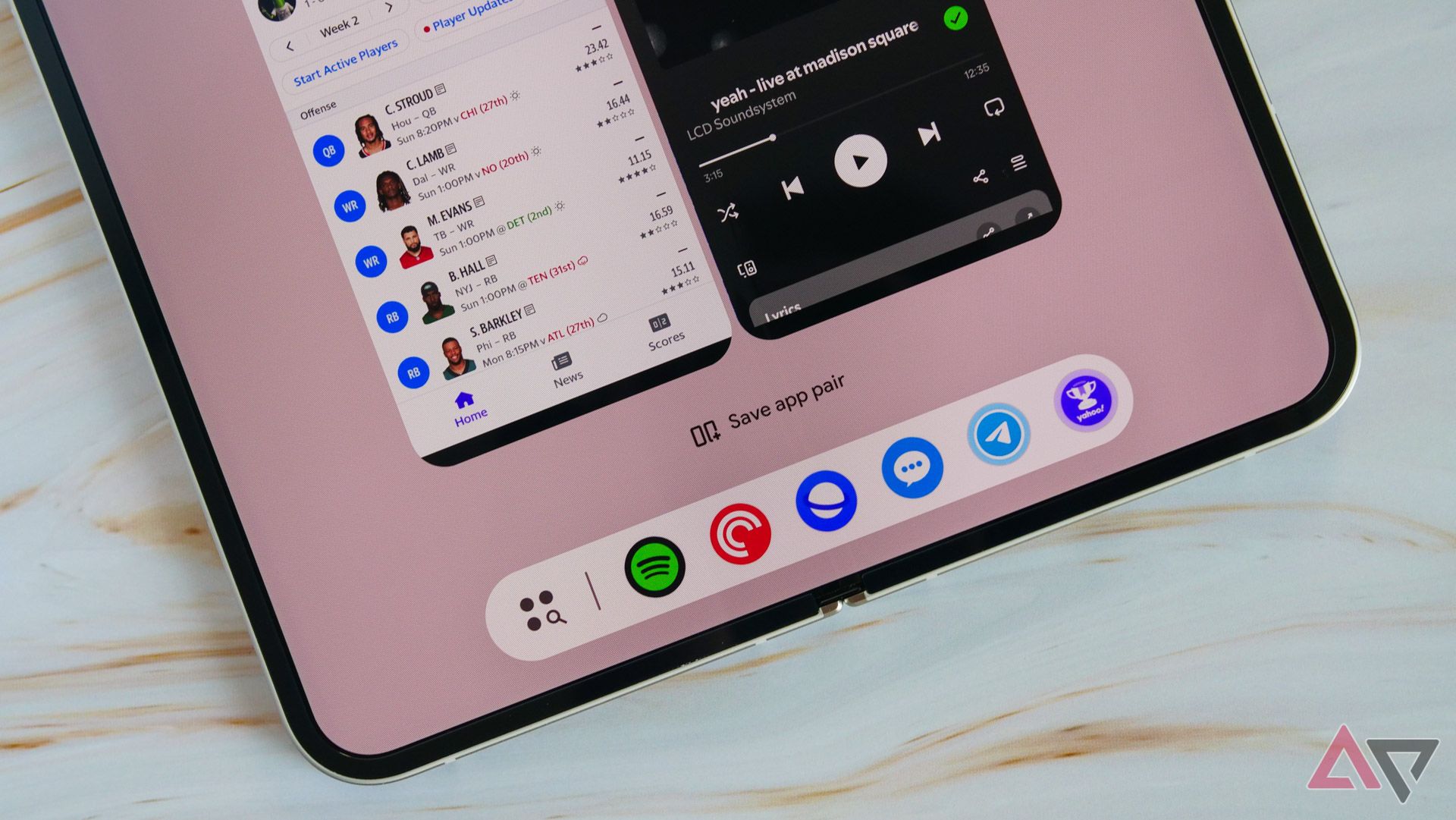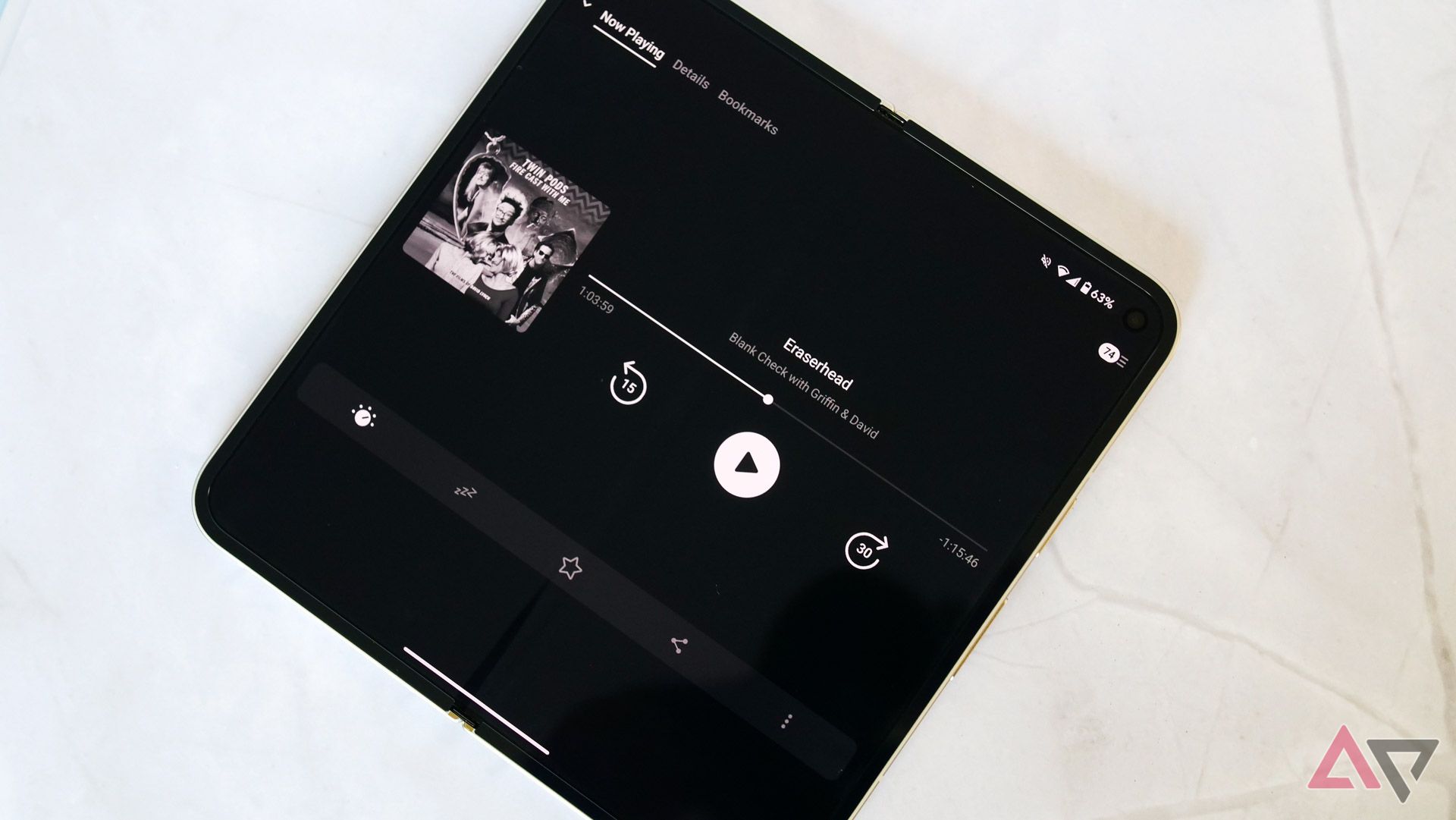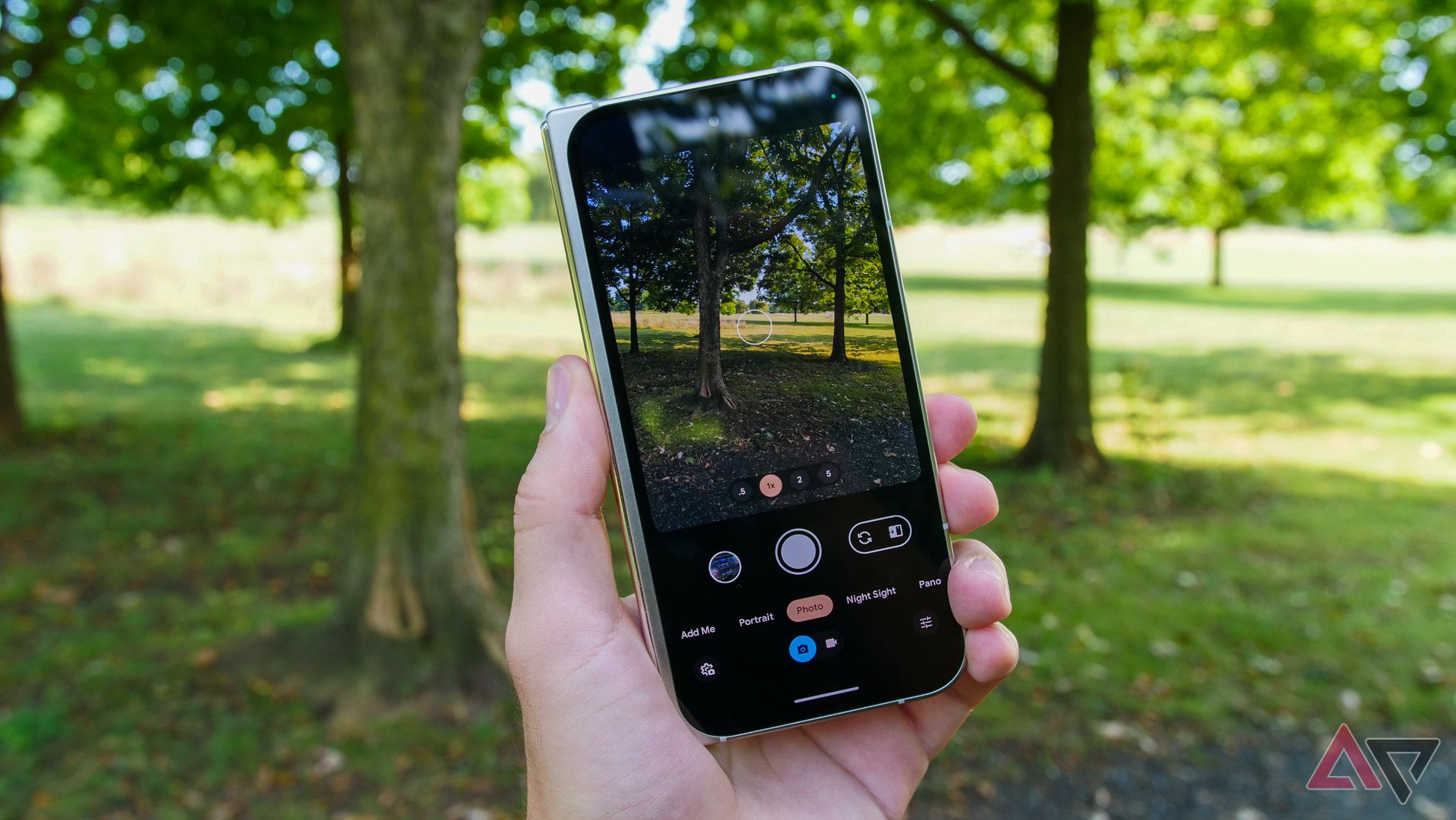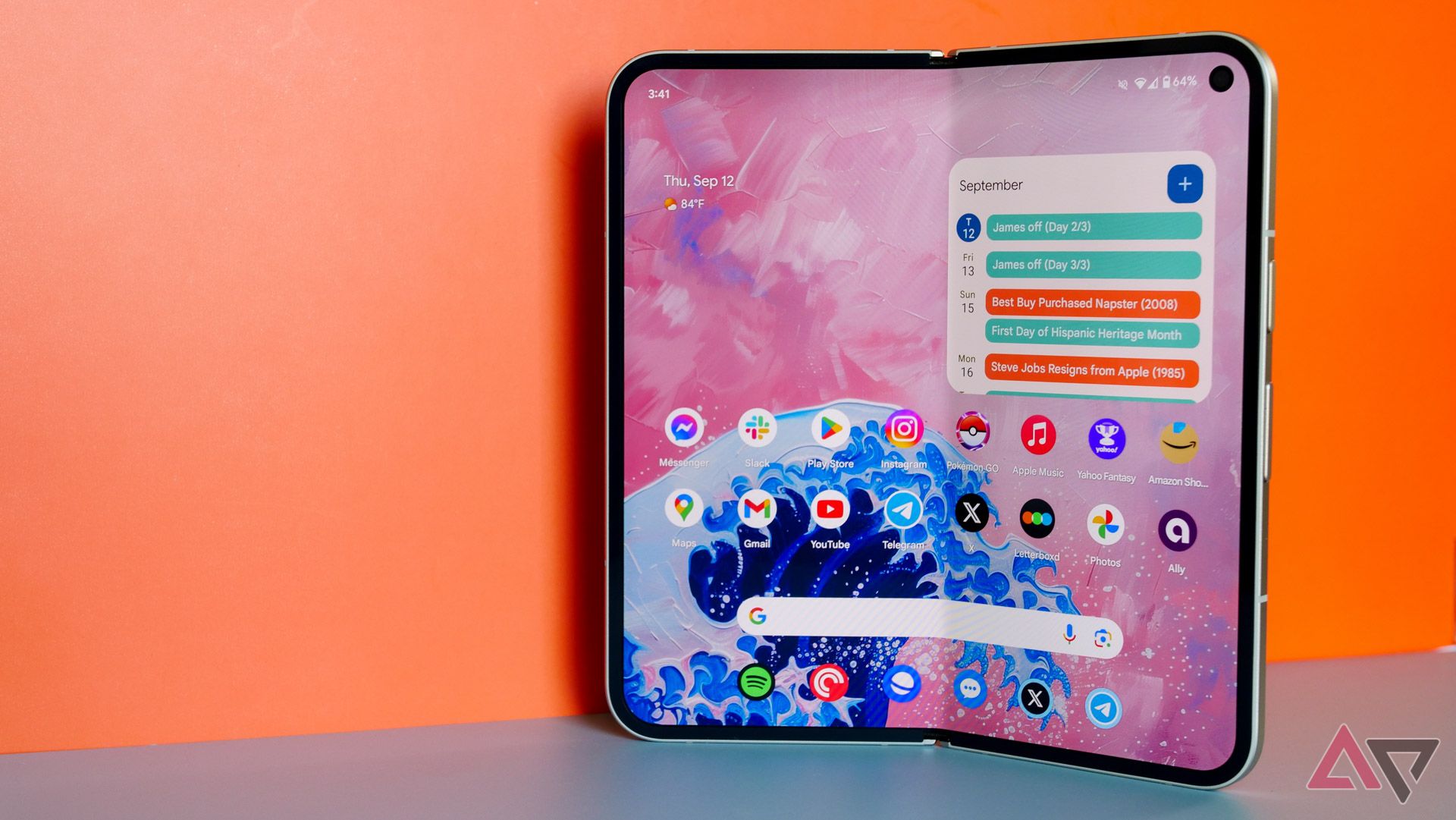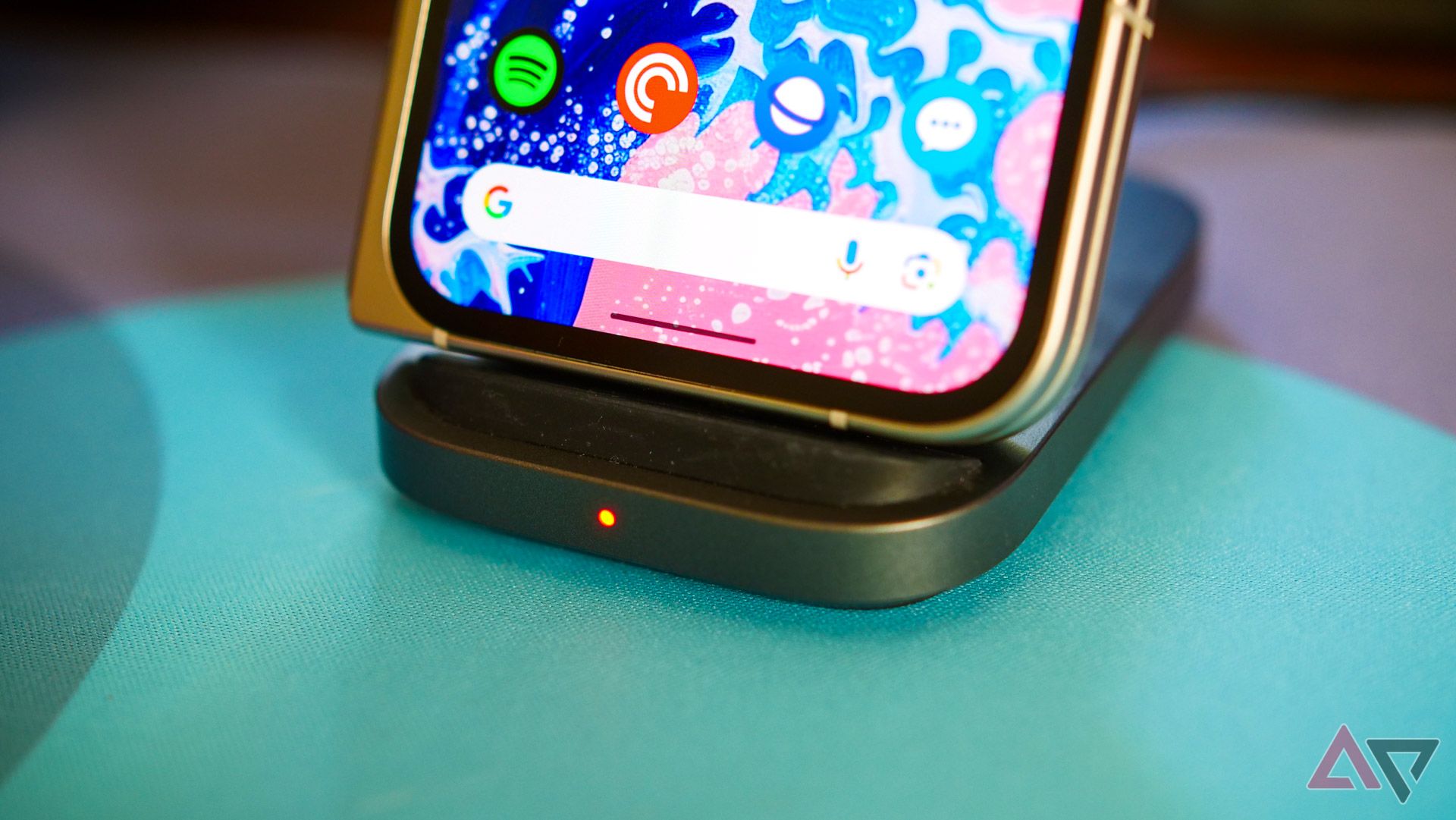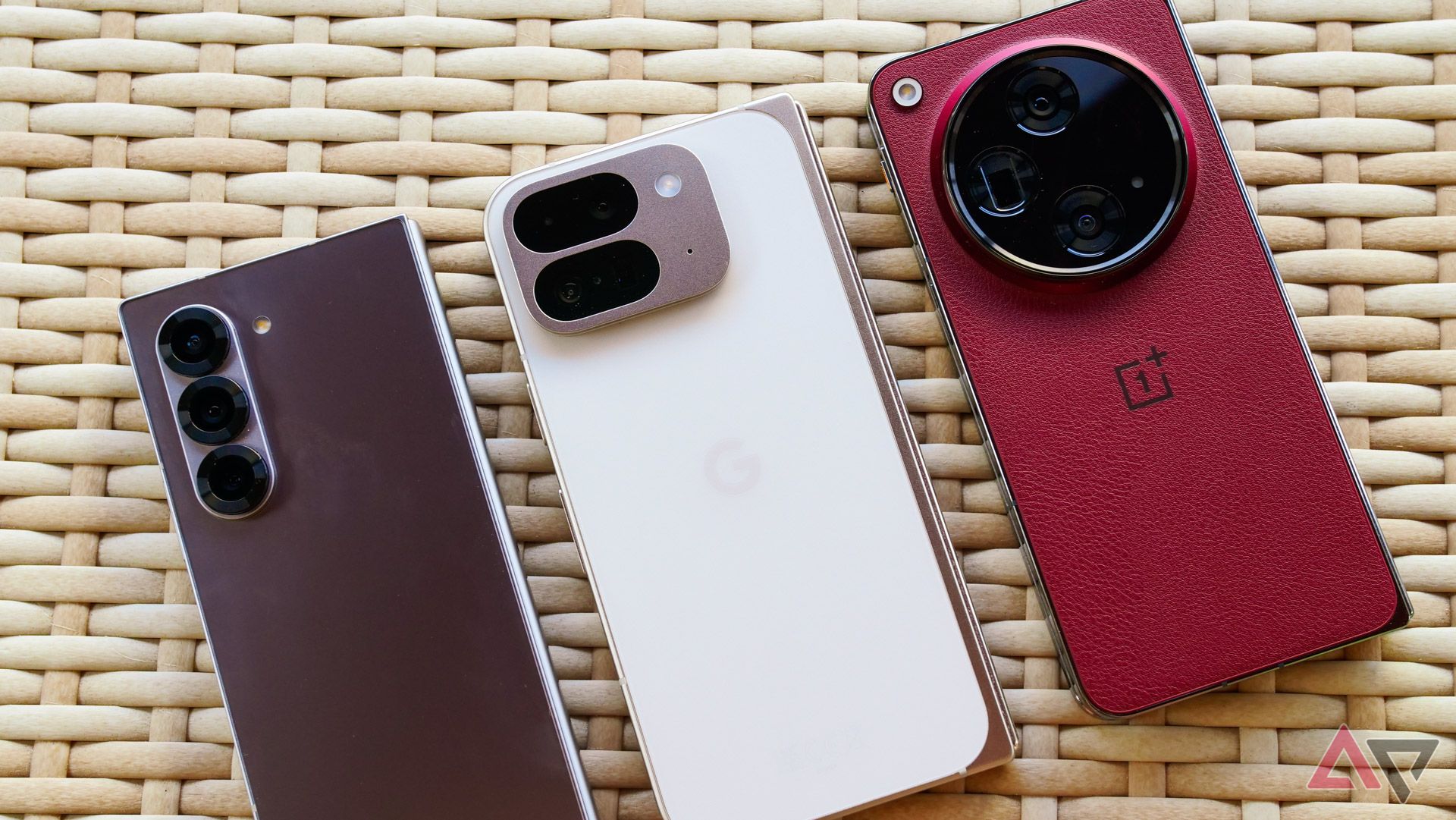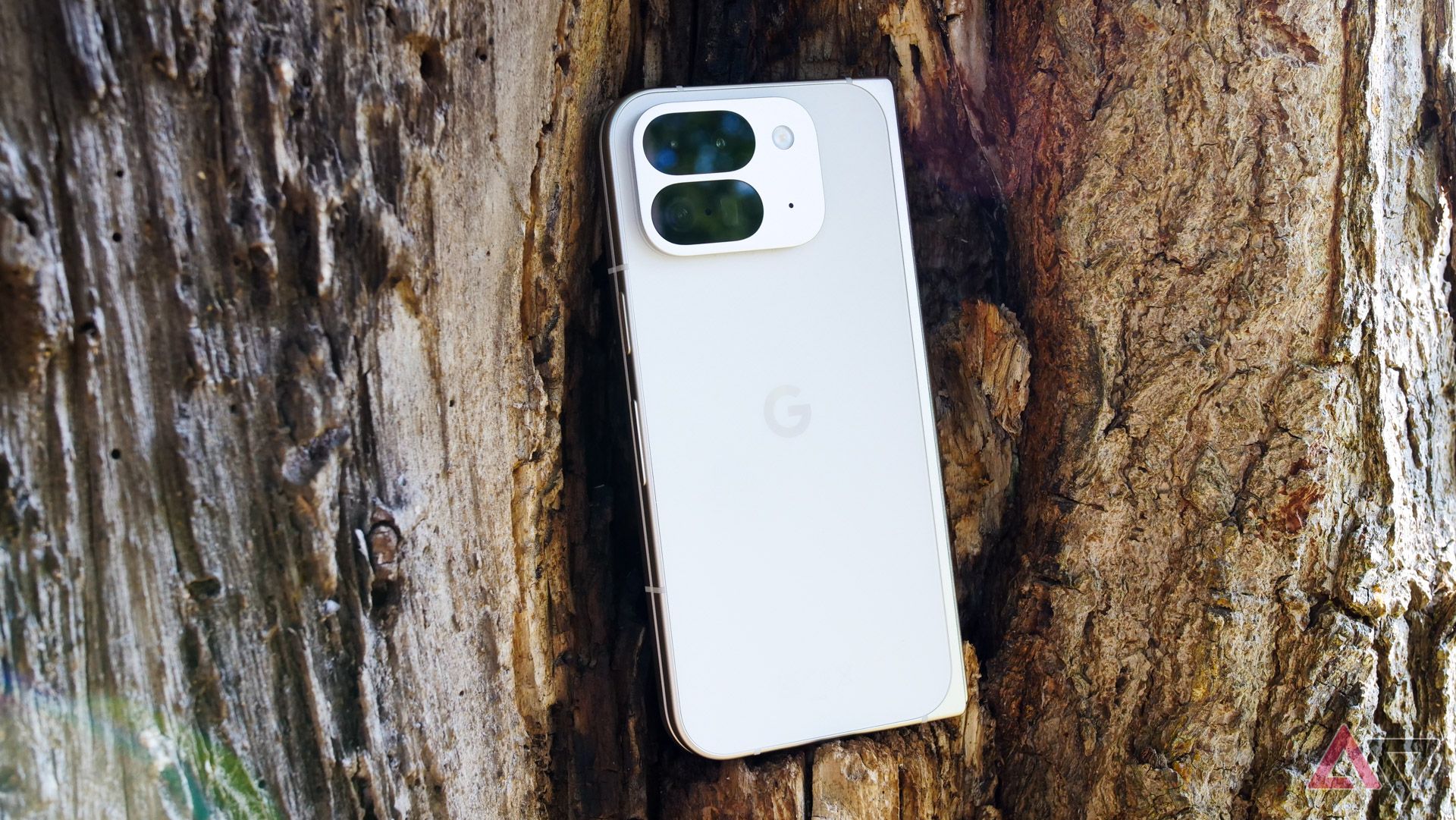It doesn’t matter what device you’re considering — every current-gen foldable delivers a compromised experience. You’re trading a thinner, lighter, more rugged device for something heavier, bulkier, and far more fragile, all in the name of gaining a huge display capable of fitting in your pocket. For a select group of Android users, it’s a worthy sacrifice. Sure, you’re paying double what most flagships cost, but you’re combining two device classes into one, and it’s hard to put a price tag on that level of convenience.
With the Pixel 9 Pro Fold, Google doesn’t want you to think of foldables as a compromised experience — “Pro” is right there in the name. And, to the company’s credit, this device is leaps and bounds ahead of its predecessor, with obvious improvements no matter where you look. But if you’re stuck wobbling between this foldable and a more standard flagship smartphone, you’re going to need to make a few sacrifices to earn its 8-inch display.
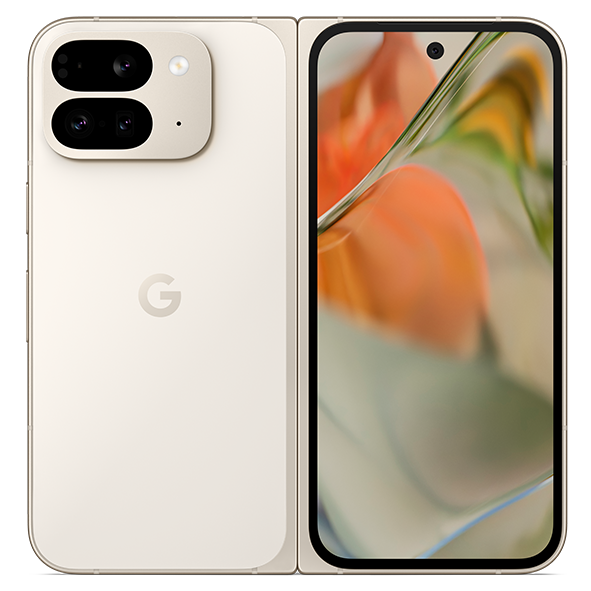

Staff pick
Google Pixel 9 Pro Fold
Google’s second-gen foldable is a massive leap forward compared to the original Pixel Fold. With a thinner chassis, two great displays, and some real software enhancements, this is the foldable we hoped would arrive last year. It’s just too bad it can’t live up to the “Pro” in its title — or the multitasking skills seen on other foldables, for that matter.
- Great new design
- Thinnest foldable yet in the US
- Excellent main display
- Google’s foldable experience is much better
- Missing some of those “Pro” features
- Camera is just okay
- Wireless charging is a surprising headache
- Falls short of OnePlus and Samsung’s multitasking skills
Availability, network, and specs
Outside the US? You might actually be able to buy Google’s new foldable
Last year’s Pixel Fold could’ve been charitably described as a limited release, only launching in four regions total. This time around, it’s arriving in a ton of new territories. You can find the Pixel 9 Pro Fold in Australia, Austria, Belgium, Canada, Denmark, Finland, France, Germany, Ireland, Japan, Netherlands, Norway, Singapore, Sweden, Switzerland, Taiwan, the UK, and the US. It’s not as wide of a reach as the mainline Pixels, but it’s better than last year.
In the US, you can buy the Pixel 9 Pro Fold through Verizon and T-Mobile starting at $1,800, as well as unlocked through retailers like Amazon, Best Buy, and Google’s own store front. It should support all three national carriers as well as their respective MVNOs, though AT&T users have found 5G issues with the device. It’s worth noting that AT&T opted out of carrying this phone in its stores, though that doesn’t explain why Google’s latest foldable is having problems connecting to 5G networks. Regardless, if you’re an AT&T user, it’s something to keep in mind.
Design and display
A multi-generational leap in just over a year
In a world where most smartphone manufacturers are sticking to similar designs for three generations (or more, in Samsung’s case), the Pixel 9 Pro Fold is a rarity. Placed next to its direct predecessor, Google’s latest foldable looks like it’s from an entirely different company; only the ‘G’ on the back gives it away. New shape, size, hinge, and camera bump — this doesn’t feel like a Pixel Fold 2, which is probably why Google decided to go in a different direction regarding the name.
While I would’ve loved to see at least another generation’s worth of improvements to the original Pixel Fold design, the Pixel 9 Pro Fold feels so good that I have a hard time being too upset over any missed opportunity. Google has effectively taken everything that made last year’s OnePlus Open my favorite foldable and crafted an excellent piece of hardware. Everything from the aspect ratio to the frame to the hinge feels familiar, and I don’t think that’s such a terrible thing.
The result is a foldable that feels like a massive leap forward, as if Google jumped from first-gen to fifth-gen hardware. While the Pixel 9 Pro Fold isn’t up to the thinness standards set by Honor or Xiaomi in China and Europe, it is the slimmest foldable US shoppers like myself can buy today. At 10.5mm, the first thing you’ll notice about this device is likely the last thing others will notice. For the first time since I started reviewing foldables, people around me were surprised when I revealed the device I was using wasn’t a standard smartphone.
While I doubt Google will maintain this lead for long, the Pixel 9 Pro Fold delivers some real pressure for Samsung and OnePlus to catch up — and, hopefully, surpass — the relatively slim chassis used here. Make no mistake, this new design really does impact how you use the phone. Even compared to the 11.7mm OnePlus Open, I’m much more likely to feel comfortable slipping this phone in my pocket. It no longer feels like a compromise, which isn’t something I could say about older (or, honestly, current) Samsung foldables.
Putting thinness aside, there’s plenty to love about this design. The left-side border might strike some as uncomfortable, but I liked how it gave my hand some space to rest when using the cover display. The matte frame and back glass is exactly what I’ve been asking for on Google’s other Pro-series phones — only the hinge will pick up fingerprints and grime during regular use. And while the camera bump is missing the style of its slab siblings, it does a solid job stopping the phone from wobbling too much, regardless of whether it’s folded. You can’t say the same for Samsung’s devices.
This shot makes the crease look much worse than it is in person, I swear.
Unlike last year, the praise doesn’t stop when you unfurl the screen. While I still prefer the anti-glare finish on the OnePlus Open, Google’s new 8-inch, near-1:1 display has fully caught up to the competition. It’s bright and not particularly reflective, which makes it perfectly usable outdoors, and the new aspect ratio feels much more comfortable in my hands. The crease is still noticeable, but no more so than on other modern folding phones. Plus, Google’s new hinge allows the display to fold flat every time, no extra effort required. It’s a night-and-day comparison next to the original Fold.
I’m less enthused about the outer display. It’s perfectly fine, using the same panel we praised on the regular Pixel 9. But that’s an $800 smartphone, and this is an $1,800 foldable. For that price, I just expect a little more. Placed next to the Super Actua display on the Pixel 9 Pro, which might be my favorite screen on any smartphone to date, the standard Actua panel here pales in comparison.
Finally, a quick word on weight. At 257 grams, the Pixel 9 Pro Fold is heavier than the Galaxy Z Fold 6 and the OnePlus Open. But unlike with the original Pixel Fold — which weighed a whopping 283 grams — this never really bothered me. Yes, it’s heavy, but not so much that I felt bogged down when holding the phone or carrying it in my pocket. I’m still hoping Google manages to bring the weight down in whatever comes next for this series, but for now, it’s perfectly serviceable.
Other hardware and what’s in the box
Throw us a bone case, Google
As I mentioned, the Pixel 9 Pro Fold’s redesigned hinge feels great. It hits 180 degrees every time without fail but is also capable of stopping at around 150 degrees before the weight of the two sides finally snaps it open. Opening the phone requires a little more pressure than I’d like, thanks to some extra-strong magnets, but I’m nitpicking — Google really nailed it this year.
Practically everything I liked about the Pixel 9 Pro’s hardware extends to this device. Haptics feel good, buttons are clicky and responsive — and, bonus, much less wiggly than on that phone — and the embedded fingerprint sensor on the power button is quick and accurate. Like most foldables, I wish Google would reach for improved dust resistance, but I’m happy to see IPX8 certification here. I walked through a few rain showers during my review period without a care in the world.
The Pixel 9 Pro Fold’s bottom-and-top-firing speakers are perfectly fine — loud enough for YouTube videos or podcasts, at least — but I wish they sounded a little bit better. Google hasn’t totally nailed its speaker quality compared to, say, the iPhone, and on an $1,800 foldable that is, in part, designed with media consumption in mind, I was hoping for a little more. Even worse, though, is their placement. Since they’re smack-dab in the middle of the frame, rotating the Fold on its side means you’re bound to cover one (or both) of the speaker grills with your hands.
I answered a lot of questions about this phone’s hardware in a Q&A prior to this review’s publication, so check that out below if you’re curious about something I’m not specifically referencing here. If you didn’t get your question in, keep an eye out for future calls to action regarding upcoming devices — it’s something we plan on doing for future flagship reviews moving forward!
Inside the box, you’ll find the phone, a charging cable, a SIM tool, and the usual paperwork. I know I’m a broken record at this point, but for $1,800, Google should offer one of its first-party cases for free with every purchase, even just as an option at checkout. These are expensive phones with minimal third-party case offerings, and delivering some protection is better than nothing. If anything, it might actually save Google from having to repair broken Folds down the road.
Software and performance
Better than before, but still behind the competition
If the Pixel Fold’s hardware was flawed, its software was its Achilles heel. Restrictive multitasking and missing features didn’t compare well to the competition—and that was in a pre-OnePlus Open world, which revolutionized how I think split-screen on foldables should work. So, if Google has fixed the Pixel 9 Pro Fold’s hardware, has it also fixed the software?
Yes, and also no. It’s a complicated answer.
Largely speaking, this is still the same experience that originally shipped with the Pixel Fold. You’re limited to two side-by-side windows — plus a PIP window for video, if you’d like — compared to the mosaic layout of Open Canvas or One UI’s overwhelming grid of little apps. But Google has improved a few elements, and while I’m not sure it’ll please every road warrior, it does feel more comparable to the competition than before.
App pairs are the big change this time around. It’s coming to the original Pixel Fold as part of Android 15, but Google backported the feature to this device ahead of its forthcoming upgrade. You can save any two apps as an app pair, pinning them to your home screen or dock as an easily accessible shortcut. It’s a small improvement, but with such a limited multitasking framework at play here, it’s essential to bringing the Pixel 9 Pro Fold up to par with its fellow foldables.
This phone also benefits from updates Google brought to the original Pixel Fold over the last fifteen months, like the ability to quickly transition from the main display to the cover screen with a quick swipe. The taskbar can now be pinned within apps to avoid constantly swiping up to find it. Apps can be forced to change shape and size in settings (thus avoiding the black borders that plagued the original Fold). And there are more ways than ever to select an app for split-screen mode, just by tapping its icon anywhere within Android.
The OnePlus Open showed me a new concept for how smartphones should be used. Nothing about the Pixel 9 Pro Fold makes me feel that way.
These are all good changes, but if you’ve used a non-Google foldable, they’re nothing new. Samsung has supported app pairs and perma-docks for ages, while the shortcut for swapping screens is taken right from the OnePlus Open. That’s not necessarily a bad thing — I’m happy to see Google catching up with the competition — but it shows a lack of new ideas on the part of the Pixel team. For instance, I’ve been so hot on Open Canvas for nearly a year because I saw a new concept for how smartphones should be used for the first time in ages. Nothing about the Pixel 9 Pro Fold makes me feel that way.
Unlike the Galaxy Z Fold 6 or OnePlus Open, the bulk of the software experience on this phone feels exactly like it does on the other Pixel 9s — only, you know, with a larger display. That’s enough to cement this as a solid, dependable foldable; I rarely go beyond two windows, even on devices that support more. But if you’re looking for the ultimate productivity machine, just know this might not scratch all of your itches, and it might be worth looking to Google’s rivals for a more unique, fully-featured folding phone.
One quick note on app support for this display: like all foldables, what does and doesn’t work well on the Pixel 9 Pro Fold is going to vary between apps. I’ve had buggy experiences with Spotify’s media player, Pocket Casts thinks I’m using a landscape tablet, and practically every game I would want to play scales poorly (though, granted, I’m not playing the world’s most popular titles; I don’t fault Square Enix for not updating Dragon Quest V for 2024 smartphones). Remember that you will need to fall back on the cover display for certain apps.
If you’re curious about how the Pixel 9 Pro Fold exists outside of these big-screen customizations, I urge you to check out my Pixel 9 Pro review. It dived deep into the state of Google’s smartphone skin and, even more importantly, its AI prowess, both good and bad. I can’t say my opinion on anything there has changed much after a couple of weeks of using this device.
As far as performance goes, I’ve been hot on the not-so-hot Tensor G4 chip since first trying it in the Pixel 9 Pro, but I’ve also been anxious to see how Google’s improved efficiency and power management would transfer into a foldable. Sure, this latest Tensor chip runs a hell of a lot cooler than its predecessors — especially compared to the Tensor G2 in the original Pixel Fold — but with such a thin chassis, I wasn’t counting on the Pixel 9 Pro Fold to stay cool under pressure.
And you know what? It’s fine. It’s not great — I’d say the Qualcomm chips in OnePlus and Samsung devices stay cooler for longer periods of time — but I was able to take the Pixel 9 Pro Fold out in the sunshine for lengthy periods of time without much issue. It definitely got warm — don’t get me wrong — but considering this chip is squeezed into a 5.1mm frame, I’m pleasantly surprised. At no point did I need to leave this device on my kitchen counter for an hour to cool off, which isn’t something I could say about Google’s first Fold.
Otherwise, this is the exact same chip you’ll find in the rest of the Pixel 9 lineup, for both good and bad. It’s simultaneously the best Tensor chip yet and a bit of a disappointment, specifically in a form factor like this. Google is placing a huge emphasis on on-device AI applications over, say, GPU performance, when this big display is absolutely begging to be used for gaming on the go. Then again, practically every game I tried out on this phone didn’t scale well on its near-1:1 display, so maybe it’s a blessing in disguise.
Camera
It’s good, but I’m not sure it’s good enough
I’ll jump right to the point: I don’t think the Pixel 9 Pro Fold’s camera is worthy of the usual stamp of quality we expect from Google. The company hasn’t changed much of the overall hardware compared to last year’s Pixel Fold. Both the main and 5x telephoto lenses appear unchanged, though the ultrawide lens is much wider than before.
In good lighting (specifically outdoors), the main 48MP sensor performs how you’d usually expect from Pixel; you can absolutely get solid shots out of this thing, and I think it exceeds what I saw from the Galaxy Z Fold 6 earlier this summer. Look at some of these sample shots. They’re not bad!
But once you leave good lighting, you’ll start to see image quality dip down to levels we haven’t seen since the days of the Pixel 2 or Pixel 3 — at least, to my eyes. Yes, the Pixel 9 Pro Fold captured some Instagram-worthy shots during a recent baby shower, but had that party taken place at night, I probably would’ve brought a different phone to capture photos with, and that’s not something you want to say about an $1,800 device. Here are some not-so-great samples taken with all three lenses on this phone.
Google seems to know that low-light can be a problem. This phone, for example, is really reliant on the main lens in tough situations. I’ve taken plenty of 5x samples not actually captured with the telephoto lens here, something you only know after the fact when digging through the image’s metadata. I trust that the phone is trying to make the most of a situation, but it also results in blurry outtakes, or having to capture a subject for a second (or third, or fourth) time. Taking a photo of a bonfire in my backyard was a hell of a challenge in a way that I haven’t felt in ages.
More samples.
None of this should be surprising, of course. I’d argue no foldable maker — not Google, not Samsung, not OnePlus — has fully cracked how to ship a flagship-worthy camera in a device like this. As companies aim to deliver thinner and thinner foldables, I’m not sure we should expect this situation to improve. And for $1,800, it’s another factor you’re compromising on compared to the non-folding competition.
For years, Google managed to get excellent performance out of ancient sensors through the magic of processing alone. I’d love to see the company rediscover that magic, rather than continuing to lean into AI party tricks like Recreate above all else. At the very least, Google, can we dial it back on erasing the contrast out of images? It’s okay to have shadows in a photo — they can’t hurt you.
Battery life and charging
This phone really could’ve benefitted from some magnets
Maybe I just have low expectations for battery life on foldables, or maybe I use the cover display more than I realize, but I’ve been pleasantly surprised with the Pixel 9 Pro Fold. With a healthy mixture of the two displays, I usually hit five hours of screen-on time before reaching for a charger. That’s probably at a 2:1 ratio when it comes to using the front screen over the main panel — it’s just more comfortable for scrolling through social media or texting.
On a recent trip to Toronto, with the phone operating primarily on cellular data, I got through a day packed with events — a screening at TIFF, breakfast and dinner with friends, all capped off with a concert — without too much trouble. I did top up the phone during a quick break at our hotel, but with charging speeds like this, I only regained 6 or 7 percent of my battery before we headed to Scotiabank Arena.
And that brings me to my real sticking point with this battery: charging. Perhaps continuing the trend of Google’s $1,800 “Pro” phone feeling more like the $800 standard Pixel 9, I really wish this phone had faster charging speeds. 27W is fine overnight, but of the four devices, this is the one that will need to be topped up the most, especially if you’re using the main display as, you know, your main display. Then again, this phone gets pretty significantly warm while charging, so maybe heat dissipation was a concern.
Speaking of charging, wireless charging is a big problem on this phone. On a fairly run-of-the-mill Spigen charging stand, the only way I could get the device to start wirelessly powering up was by holding it about a centimeter above the dock’s lip, waiting for the coils to recognize their alignment, and then gently placing the device down in its resting spot.
Daniel Bader (former EIC of AP, still very much my boss) has it even worse — his personal unit keeps sliding off the charging puck overnight, meaning he’s woken up to a half-charged phone multiple times. These issues even extend to Google’s own charging dock, which isn’t supported by this phone and has seemingly been discontinued in the wake of its launch. If only there was a way to guarantee coil alignment issues weren’t a problem. Oh, well — maybe next year.
Competition
In the US, it’s a three-horse race
I’ve repeatedly mentioned the Galaxy Z Fold 6 and OnePlus Open throughout this review, largely because those are the only options available in the US that don’t require imports. If you aren’t sold on the Pixel 9 Pro Fold but you are sold on a foldable, you’re probably going with one of these two devices.
My pick is still the OnePlus Open. Despite being nearly a year old, it has held up well as a fantastic foldable. Even Tensor G4’s improvements still can’t compete with the better battery life and gaming performance gained by the Snapdragon 8 Gen 2, and with ultra-fast quick charging, you can get a full battery in 30 minutes. The camera, like all foldables, is a mixed bag, though I quite like the Hasselblad color tuning included by OnePlus — it’s got character in a way the Pixel’s processing just doesn’t.
Ultimately, though, the Open’s biggest strength is its price. You can consistently find it for around $1,300, and that’s before trade-in offers. I also wouldn’t be surprised if an Open 2 appears in the coming months; we’ve seen rumors finally start to pick up, pointing to an even thinner chassis than Google’s.
I’m not a huge fan of the Galaxy Z Fold 6, but I can’t deny that Samsung’s big-screen experience is as powerful as you can find on the market right now. One UI gives power users the flexibility they crave, allowing for windows on windows in Android — and that’s before you factor in DeX mode. While I wish Samsung had done more with its hardware this generation, especially for $1,900, the Z Fold 6 is about as far as you can get from feeling like a beta tester in the world of foldables. And for a lot of consumers, that’s priceless.
Should you buy it?
There are two ways of looking at the Pixel 9 Pro Fold, depending on which part of its name you focus on. If you focus on the Fold, you’re in for a great time. Google has done an excellent job catching up with Samsung and OnePlus, even surpassing them in some crucial ways. I did not have a particularly good time using the original Pixel Fold as my daily driver, but the Pixel 9 Pro Fold might’ve convinced me I’m a foldable fan after all.
However, if you focus on the rest of its name — Pixel 9 Pro — you might be disappointed. I think Google made a pretty big branding mistake trying to fold this into the rest of its smartphone lineup. There’s a reason Samsung keeps the Galaxy Z-series separate from the Galaxy S-series: expectations. In some ways, this phone has more in common with the standard Pixel 9, right down to an identical cover display panel. And for $1,800, it can be hard to accept those trade-offs.
We’re getting closer than ever to a compromise-free foldable experience (so long as you don’t count the price tag as a compromise — it’s not coming down anytime soon). The Pixel 9 Pro Fold isn’t there yet, despite the “Pro” in its title. As long as you’re comfortable sacrificing some commonplace flagship elements, Google’s new foldable is absolutely worth buying. But I can’t help but feel like something even better is right around the corner.


Staffpick
Google Pixel 9 Pro Fold
Google’s foldable series now has a new name! The successor to the 2023-released Pixel Fold is the Pixel 9 Pro Fold, starting at $1,800. This year’s foldable boasts a bigger 8-inch Super Actua inner display, paired with a 6.3-inch outer display. It is powered by Google’s new Tensor G4 chipset, paired with 16GB of RAM, marking a much faster, more efficient device than its predecessor.
Source link
